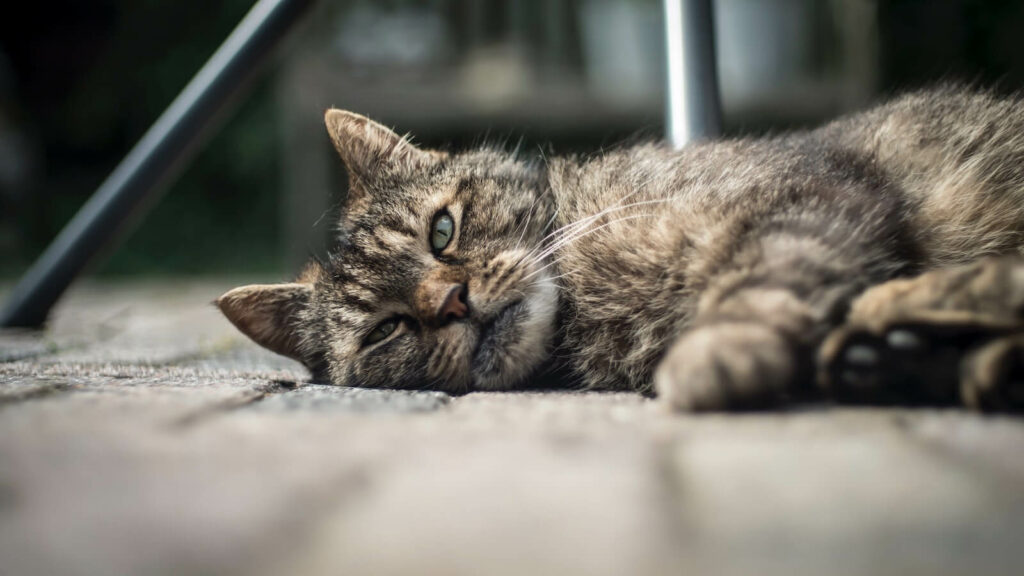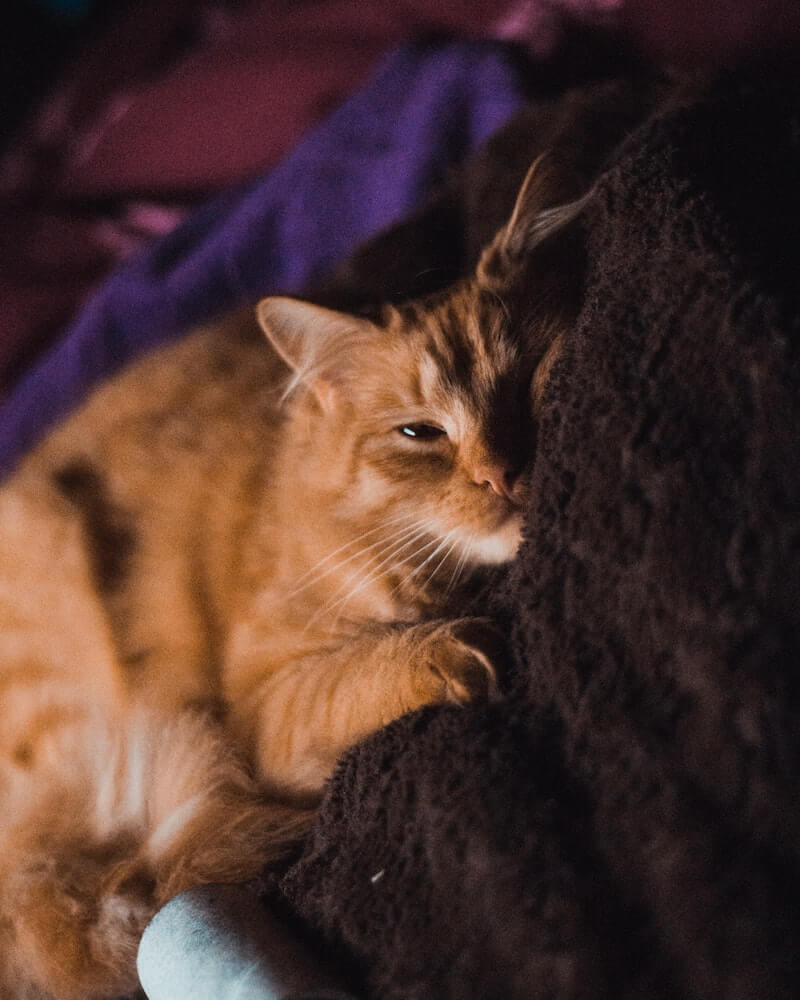Have you ever wondered how similar we are to cats? Can cats get colds? We have significant differences, but we share aspects as varied as seeing color, dreaming in our sleep, and catching the flu. Yes, that’s right, cats get the flu too, and they even have similar symptoms. If you’re interested in how to prevent or help your cat when it has a cold, you’ll find all the information you need here.
Feline Upper Respiratory Infection
Feline upper respiratory infection (URI) is the correct way to refer to the common cold that affects cats. It is an infectious disease caused by a virus or bacteria, resulting in a mild illness lasting seven to ten days.

One or more bacterial agents can cause colds, the most common being feline herpesvirus type 1 (also known as feline viral rhinotracheitis or FVR) and feline calicivirus (FCV), which we will discuss later.
Can cats get colds? Cold symptoms in cats
The symptoms are the same as those we humans suffer every time we catch the flu. Although colds cannot be cured, i.e., you have to wait for the symptoms to pass, they are not usually a severe problem for your cat’s health.
The most common symptoms not to worry about
- Sneezing
- Runny nose
- Watery eyes
- Discharge from the eyes
- Mild fever
- Lethargy
Symptoms to be considered
- Reduced appetite
- Coughing
- Yellow or green discharge from nose or eyes
This second set of symptoms usually occurs when the cat has a poorly treated cold that can become complicated and become pneumonia. The problem with pneumonia is that it affects the lungs, complicating breathing. In these cases, you must be aware of the cat’s congestion level and other symptoms that could follow, such as lack of appetite and dehydration.
How do cats catch colds?
Colds are highly contagious because the way a cat gets infected is straightforward, have an infected cat sneeze near your cat, and if a single drop of saliva comes in contact with his body, that’s it. He will probably get sick too.

It is much more common for cats that suffer from colds to be cats that spend a lot of time outdoors and play with other cats (feral and house cats) or those that were rescued from a shelter. If you are wondering why, let me explain how the two most common types of viruses work.
Feline Herpesvirus type 1 (FVR)
As the name suggests, it is a herpesvirus, and unfortunately, as with humans, herpesviruses cannot be cured. Once a cat is infected with Feline Herpesvirus, it will have the bacteria in its body for life. Although this doesn’t mean that it will always have a cold, it will have the virus “sleeping” and waiting to be activated, making the cat sick again.
That is why it is said that generally, the cats that come from a shelter, where they live with other cats, or those that go out at night for a walk, are the most prone to get infected because in a controlled environment (like a house) it would be challenging for them to get infected.
Situations triggering FVR in an infected cat can weaken or compromises the cat’s immune system, from a nutrient-poor diet to a stressful event or one that affects the cat’s mood.
Feline Calicivirus (FCV)
Cats that catch feline calicivirus colds do better than those infected by FVR because, fortunately, FCV is entirely curable. It is contagious in the same way. If a healthy cat contacts a sick cat, it can easily touch saliva or mucous membranes and become infected. It usually takes two to six days for a newly infected cat to show symptoms of discomfort, which should not exceed two weeks.
Although both viruses are highly contagious among cats, they are not transmitted to humans or other animals. You can ask your veterinarian for a vaccine to prevent both viruses from keeping your kitty safe.
Treatment for cat flu
Although there is no cure for the common cold, there are many remedies you can use to reduce symptoms and make your cat more comfortable while she is recovering.
- If your cat is very congested, you can let her stay in the bathroom while you shower. The steam from the hot water will help her decongest her airways. She will rest for sure.
- Prepare a comfortable bed with extra blankets to help keep her warm. You can also resort to using heating pads under her bed. This way, your cat can take long, restorative naps.
- Use a humidifier or vaporizer to avoid having dry air in your home and prevent your pet’s airways from becoming more inflamed.
- It is preferable to confine your cat in a quiet, enclosed room where your cat can have her food, water, and litter box. Controlled spaces help them stay calm and reduce stress, which in the case of RVF, could be the cause of the flu.

Can cats get colds? The bottom line
A cold in cats is a disease that, fortunately, is not serious and can be remedied with some primary care. Remember that a sick cat will feel low in spirit, so be very affectionate and pamper your little one. After all, a few extra snacks won’t hurt anyone.
Have you ever had a cat with a cold? What did you do? Please share your experiences in the comments below! We love to hear from you!
